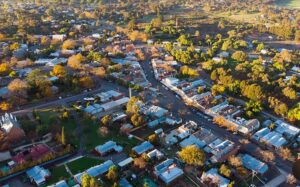
Australia caught many by surprise when it announced on 9 December a A$200 million (US$165 million) pledge to the UN Green Climate Fund.
The government had previously ruled out a contribution to the Fund, which will help developing countries to build cleaner economies and more climate-resilient societies. But international pressure to step up appears to have hit a nerve.
Even the thought of a pledge to the Fund would have faced considerable resistance from some members of Cabinet. So the government deserves some credit for making the right decision to support the Fund.
Australia now joins 26 other contributors to the Fund, ranging from the US, Japan, Canada and most of the EU to Korea, Indonesia and Mongolia. Thanks to the latest pledges by Australia and Belgium, the Fund has now hit the US$10 billion target that it set for its initial operations.
In addition to the practical value of support for developing countries, Australia’s pledge has significant symbolic value. Developing countries see support for the Fund as a test of wealthy countries’ resolve to cooperate under a global climate deal slated for Paris next year.
But important questions remain about Australia’s pledge. Is the size of the pledge credible? Where will the money come from? And what will the funding be used for?
Not quite a fair share
Based on its emissions and income, Australia’s fair share of global climate finance would be around 2-3 per cent, according to research I co-authored with ANU colleagues, as well as independent research recently published in Nature Climate Change. This would amount to US$200-$300 million of a US$10 billion target. This is consistent with Australia’s most recent pledge to the Global Environment Facility (2.4 per cent), and somewhat under its share of wealthy countries’ aid (3.6 per cent in 2013).
At around 1.7 per cent of the Fund’s target, Australia’s pledge falls short. But it is comparable to some of Australia’s contributions to other efforts, such as the World Bank’s concessional lending arm and ‘fast-start’ climate finance (both around 1.8 per cent).
As it stands, Australia’s four-year pledge to the Fund (A$50 million a year) makes up only a quarter of what the previous Labor government spent on climate change support for developing countries in the three years to mid-2013 (A$200 million a year). While the Coalition government continues to provide other climate-related assistance through its aid program, it has not yet clarified how much that amounts to overall. Greater clarity on this would give a more comprehensive picture of whether we are pulling our weight on climate finance.
In any case, Australia’s funding will need to ramp up well beyond A$200 million a year to meet its share of US$100 billion a year in climate finance that wealthy countries have promised to mobilise by 2020. That target will be met from private as well as public sources, but it will still involve a significant call on national budgets over coming years.
Robbing Achim to pay Hela?
Another controversial issue is where the money will come from. The government has stated that the pledge will come from the existing aid budget. But doing so raises doubts about whether Australia’s pledge is ‘new and additional’, as climate finance is supposed to be under UN agreements. The rationale here is that funding for climate change should not divert resources that would otherwise be used to help developing countries meet existing challenges such as providing basic services, health and infrastructure.
The Labor government was able to argue that its fast-start finance was additional because it was drawn from a growing aid budget. But now that the Coalition has taken an axe to the aid program, that argument cannot be used.
News of Australia’s pledge to the Fund followed hot on the heels of the revelation that Australia had cut its funding to the United Nations Environment Programme (UNEP) by $4 million over four years.
The resources for the A$200 million pledge will be drawn from various parts of the aid budget over the next four years, so this may not be a simple case of robbing Achim (Steiner – the head of UNEP) to pay Hela (Cheikhrouhou – the head of the Fund). But the UNEP move is puzzling all the same given the diplomatic costs resulting from a minor saving, and the fact that the operations of UNEP and the Fund are highly complementary.
Earmarked or not?
Finally, what will the money be used for?
Ministers have stated that the pledge will be directed towards the Indo-Pacific region. And Environment Minister Greg Hunt has given the impression that a large part of Australia’s money will be directed toward protecting forests in neighbouring countries.
Australia is not the only country to have attached conditions to its pledge. The US aims to channel some of its pledge toward mobilising private investment. But it remains unclear whether the Fund will accept pledges that come with a lot of fine print. Doing so would run the risk of tipping the delicate balance between the roles of developed and developing countries, both of whom have legitimate interests in shaping the Fund’s priorities.
Even if Australia can’t earmark all or even any of its pledge, this shouldn’t be anything to lose sleep over. The Fund aims to achieve a roughly equal split between adapting to climate change impacts and mitigation (reducing emissions). This is similar to Australia’s portfolio of fast-start climate finance.
Around 40-50 per cent of multilateral climate finance already goes to the Asia-Pacific region, which is the source of much of the world’s current emissions growth and home to many of the communities most vulnerable to climatic risks such as cyclones and sea level rise.
The Fund will have a major focus on sectors highlighted in Australia’s announcement, including forests and energy. And the Fund has been through a painstaking design process to maximise the chances that its resources will be spent transparently and effectively.
Considering its wealth, emissions and the longer-term funding target it has signed up to, Australia has further work ahead to ramp up its climate support for poorer countries. And if some or all of Australia’s support is to be drawn from the aid budget, it should come from a growing pool rather than a stagnant or shrinking one. Having said that, in making a modest but credible pledge to the Fund, Australia has made a welcome step in the right direction.
Jonathan Pickering is a Visiting Fellow at the Development Policy Centre at the Australian National University.








